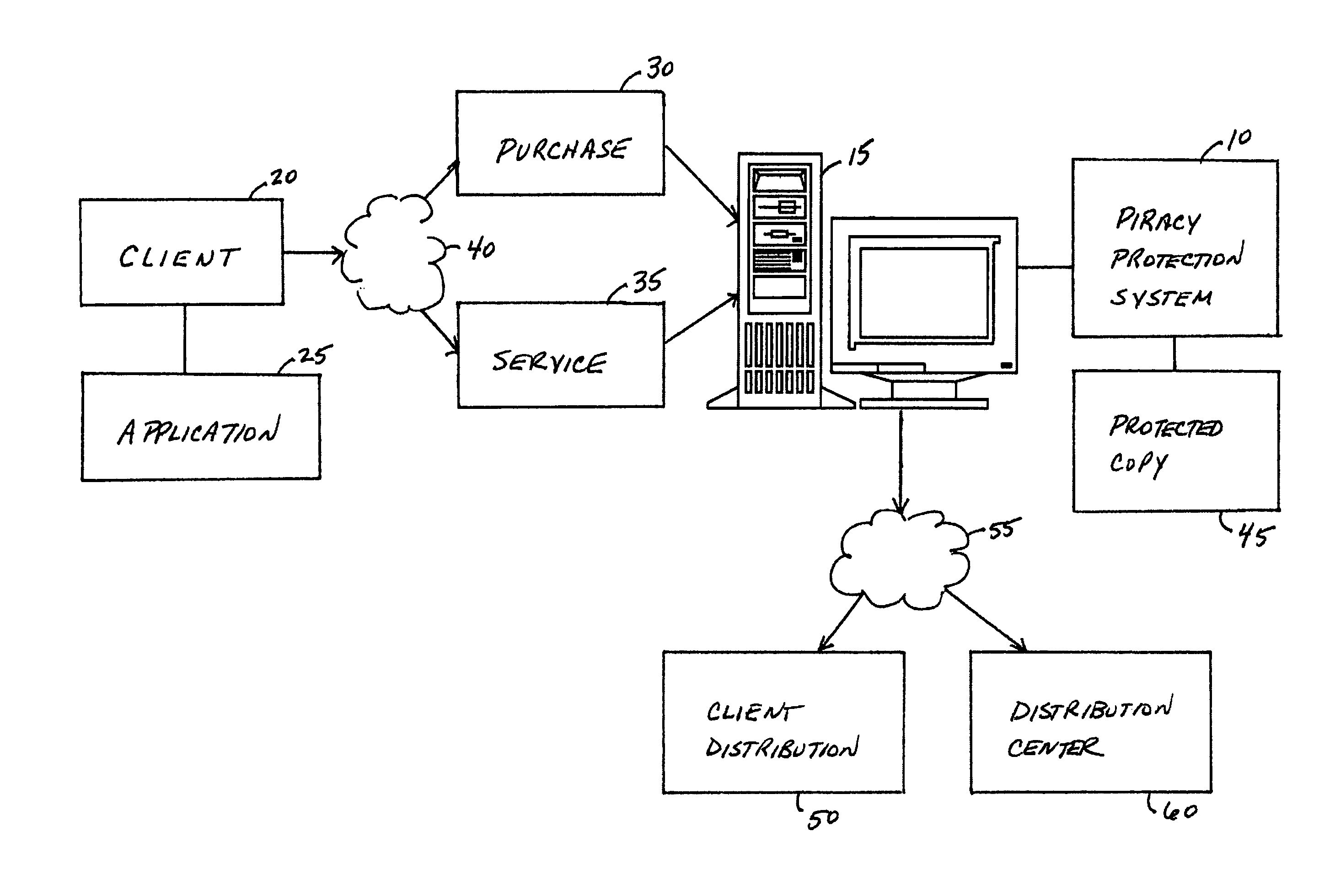System, method, and service for detecting improper manipulation of an application
a technology of improper manipulation and detection method, applied in the protection of program/content, television system, instruments, etc., can solve the problems of software watermarking generally vulnerable to semantic preservation transformation, software piracy costs the software industry billions of dollars in lost revenue every year, and reduce the probability of piracy, so as to prevent collusive attacks, resist subtractive and collusive attacks, and prevent piracy.
- Summary
- Abstract
- Description
- Claims
- Application Information
AI Technical Summary
Benefits of technology
Problems solved by technology
Method used
Image
Examples
Embodiment Construction
[0049]The following definitions and explanations provide background information pertaining to the technical field of the present invention, and are intended to facilitate the understanding of the present invention without limiting its scope:
[0050]Deterministic Path: An execution path through an executable code such as an application that is executed each time the application is executed.
[0051]Non-deterministic Path: An execution path through an executable code such as an application that is not executed each time the application is executed such as, for example, portions of the executable code that reside in an if statement or an else statement.
[0052]FIG. 1 portrays an exemplary overall environment in which a system, method, and service for detecting improper manipulation of an application (the piracy protection system 10 or “system 10”) according to the present invention may be used. System 10 comprises a software programming code or a computer program product that is typically emb...
PUM
 Login to View More
Login to View More Abstract
Description
Claims
Application Information
 Login to View More
Login to View More - R&D
- Intellectual Property
- Life Sciences
- Materials
- Tech Scout
- Unparalleled Data Quality
- Higher Quality Content
- 60% Fewer Hallucinations
Browse by: Latest US Patents, China's latest patents, Technical Efficacy Thesaurus, Application Domain, Technology Topic, Popular Technical Reports.
© 2025 PatSnap. All rights reserved.Legal|Privacy policy|Modern Slavery Act Transparency Statement|Sitemap|About US| Contact US: help@patsnap.com



